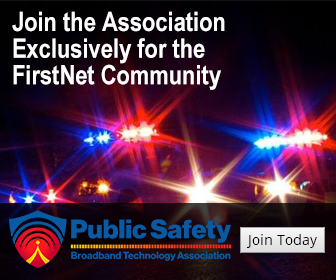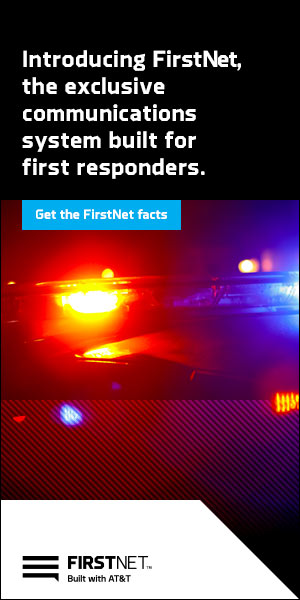Andre Jones

I recall sitting in a 911 center recruitment session and recruiters talking to me about the lifesaving work of a 911 dispatcher. They explained the job duties, job responsibilities, job demands, and even the job stress. “Wow,” I thought. “I can do this. I can help people.”
About three years later, I was over it. What the recruiters left out is that job commitment and job satisfaction come under attack by the work environment and organizational culture. These things impacted my organizational commitment, ultimately causing me to quit. And such is the story all over the country, from center to center, the real reason for absenteeism and turnover … dispatcher not leaving the job, but leaving the organization. The illusion has always been that it is the job stress that is the cause for turnover, but it is actually the toxic culture.
The Cambridge dictionary tells us that an organization is “a group of people who work together in an organized way for a shared purpose.” However, the word organization is often self-identified as some mystically magical entity we know as “management.” This is the problem. Dispatchers typically see management as their pinnacle priority and not EACH OTHER. While management is a process of organizing the organization, they are not grand supreme. WE THE PEOPLE in the 911 center reign supreme, and without our commitment, there would be no organization.
Organizational commitment is the level of dedication of the individual to the collective purpose. It’s our individual understanding of that purpose that ultimately determines why we remain connected to it. That leads me to ask a question we should ask ourselves often … Why am I here? At a minimum, ask this question biannually during performance reviews to determine if you are in the right place. But I would challenge you to ask it daily before you walk into the workplace and put on that headset; WHY AM I HERE? Is it because you want to be here, you have to be here, or you need to be here? But don’t be confused by the question. It should be read as “Why are you here at this organization?”
Bon & Shire (2017) suggest a need to understand organizational commitment in terms of desire-based (affective commitment), obligation-based (normative commitment), or cost-based (continuance commitment). Management would have you believe you are in the 911 center to serve, and this selflessness cannot be measured. However, when staffing is not adequate, support from leadership is lacking, and there are no mental health initiatives, does that make you want to stay? Do pizza parties, cakes, free stress balls, and fancy certificates make you want to stay? I think not.
In fact, with the cognitive and emotional demands, computer problems, time pressure, interpersonal problems, work pressure and overload, we want to be on the job less and less (Schaufeli & Taris, 2014). What is management doing to cultivate the organization beyond the imposition of vision and mission statements?
Management is there to provide tools and resources so that the vision and mission are executable. However, it is unfortunate that the resources they impose like leadership, appreciation, financial rewards, and team cohesion and harmony, which should balance the demands, actually exacerbate outcomes, leading to absenteeism and turnover (Schaufeli & Taris, 2014). The only real tool and resources we have are ourselves, and the only thing we can do is go back to the basics and establish our own personal center. This requires that you evaluate YOUR purpose and your WHY and align it with your organization’s mission. This will then change the meaning of the question to be “Why are you here in this job?”
While my WHY is to help people, I can do so by “delivering the safest, most effective, and compassionate care to all its patients” at Hamad Medical Corporation Ambulance Service, national ambulance service in the State of Qatar in the Middle East. So at the end of the day, I ask myself … was I safe today, was I effective today, was I compassionate today? The answers will potentially determine whether I am here because I want to be here, because I have to be here, or because I need to be here.
We all have a choice. I did when the vision and mission were not enough, and I lost my connection to the culture and my ability to follow management. I was ready to move on from “Crisis 911” and be a part of “Serenity 911”. In another place, I felt my purpose would be a good fit, and I could continue to be of service without giving away my “self.” After all, if we cannot take care of “self” and each other, we are in no position to care for the community.
Are you a part of Crisis 911 or would you rather be a part of Serenity 911? Even if you are on the job because you have to be there, you can still do your part to create a pleasant culture. Organizational commitment nourishes job commitment as well as mitigates turnover (Brunetto, Teo, Shacklock & Farr-Wharton, 2012). Everyone in the 911 center needs to be more involved and empowered to forge the culture—not just management.
References:
Bon AT, Shire AM. “The impact of job demands on employees’ turnover intentions: A study on telecommunication sector.” International Journal of Scientific Research Publications. 2017; 7 (5).
Brunetto Y, Teo S, Shacklock K, Farr-Wharton R. “Emotional intelligence, job satisfaction, well-being and engagement: explaining organizational commitment and turnover intentions in policing.” Human Resource Management Journal. 2012; July 8. doi.org/10.1111/j.1748-8583.2012.00198.x (accessed May 28, 2019).
Schaufeli WB, Taris TW. “A Critical Review of the Job Demands-Resources Model: Implications for Improving Work and Health.“ Bridging Occupational, Organizational and Public Health: A Transdisciplinary Approach. Springer Science+Business Media Dordrecht. 2013; Aug. 22. doi.org/10.1007/978-94-007-5640-3_4 (accessed May 28, 2019).
ED-Q Performance Standards. Tenth Edition International Academies of Emergency Dispatch; Salt Lake City. 2018.
BIO
Andre Jones is the Assistant Executive Director of Communications and Control Centers for Hamad Medical Corporation, the national ambulance service in the State of Qatar in the Middle East. He is a Master Software Instructor and National Q Evaluator for Priority Dispatch Corp.™ as well as an Adjunct Instructor at Jacksonville State University’s Department of Emergency Management where he earned his BSc, M.S., and M.P.A. He is currently working on a Ph.D.



